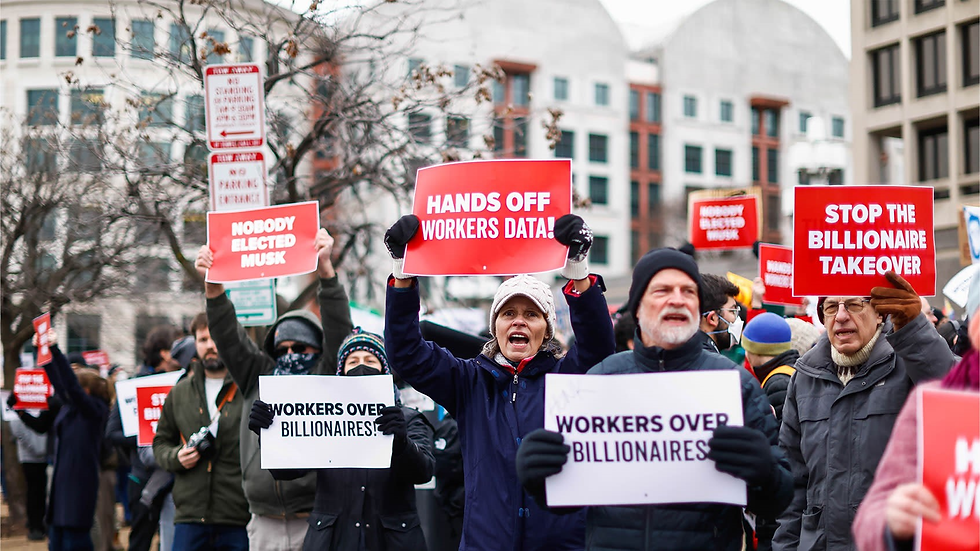
The recent layoffs of federal workers during the Trump administration have led to a whirlwind of emotions, confusion, and unease. As media reports highlighted budget cuts and staff reductions, employees across various government agencies faced an uncertain future. With growing fears and frustrations, these individuals navigated the profound impact of losing their jobs. Beyond the practical aspects of unemployment, they encountered emotional challenges—shock at losing their livelihood, feelings of undervaluation, and the struggle for clarity in a chaotic environment.anger, confusion and uncertainty among laid off federal workers by Trumps administration.
Veterans Administration says fires more than 1,000
CFPB firings appear to extend beyond probationary employees
Musk team member enters IRS, raising fears of cuts at tax collecting agency
Termination notices sent to workers at Education Department, Small Business Administration.
Termination emails have been sent in the past 48 hours to workers across the government, mostly recently hired employees still on probation, at agencies such as Department of education,the Small Business Administration,the Consumer Financial protection Bureau and, the General Services Administration, which manages many federal buildings.
Trump and Tesla CEO Musk's overhaul of the federal government appeared to be widening as Musk aide appears for the first time at the federal tax-collecting agency, the Internal Revenue Service, and U.S. embassies were told to prepare for staff cuts.
During the Trump administration, the reshaping of federal workforce policies greatly affected employees. Efforts to enhance efficiency resulted in significant staffing cuts, slashing thousands of jobs across different departments. For instance, in 2018 alone, the Department of Housing and Urban Development cut more than 1,300 positions, a 10% reduction in its workforce.
The layoffs were compounded by executive orders and legislative changes, which left many federal workers confused about their rights, the potential for rehire, and available support systems. A considerable percentage of former employees reported feeling abandoned, unsure of how to navigate the post-layoff environment with little guidance from authorities.

Trump defended the layoff of federal wokers and dismantling the federal agencies and cited Fraud and waste among the agecies. The federal debt of $36 Trillion and the deficit of $.8 Trillion. Elon Musk the head of DOGE, the department of Government efficiency vowed to cut spending across multiple Government agencies, including the Department of Education, and purging of Federal wokers decrying corruption in Agencies like USAID, and inefficiencies. For example multiple agencies contracted with Government. The Department of Defense will not be spared according to media sorces and interviews with repoters across multiple news platforms.
The emotional impact of layoffs often equaled their professional consequences. Anger surged through the affected workforce. Many felt betrayed by an administration they thought would support public service roles. Surveys indicated that 60% of laid-off workers felt their contributions were undervalued, deepening their sense of disillusionment.
Further confusion emerged as many could not reconcile their personal experiences with the broad policies enacted. The fallout extended beyond individual workers, causing disruptions in families and communities. Loss of income frequently led to financial struggles, with nearly 40% of affected workers reporting anxiety-related mental health issues, exacerbating the need for local services.
Amid uncertainty, former federal workers grappled with the question: what’s next? A lack of clear communication from governing bodies heightened feelings of despair. The job market presented additional challenges; as of 2020, there was a reported 25% decrease in federal job openings year-over-year. The stigma of being laid off, combined with the anxiety of reentering the workforce, created hurdles many were not prepared for.
In this challenging climate, many individuals turned to their networks. This support was vital as they navigated unemployment, finding guidance and emotional backing from peers, professional groups, and mentorship programs.
In response to the challenges faced by laid-off federal workers, community organizations and advocacy groups began to spring into action. They developed programs designed to assist displaced employees in transitioning to new careers and securing temporary relief.
For example, local NGOs initiated workshops on skills training, resume writing, and interview preparation. These programs have been instrumental in providing individuals not only with valuable job-search skills but also with the community support crucial for psychological resilience during tough times.

Legislative Advocacy
With layoffs reshaping the workforce, advocacy for legislative change gained traction. Various groups rallied for policies intended to protect worker rights during transitions, ensuring support for laid-off individuals and calling for transparency in hiring practices.
This advocacy highlights the need to recognize federal workers as fundamental contributors to government and society’s functioning. Discussions surrounding worker protections have emphasized building more robust support systems within federal employment frameworks, ensuring job security even during politically tumultuous times.
The stories of laid-off federal workers during the Trump administration serve as crucial reminders of the intersection of individual experiences with broader political dynamics. As employment policies continue to shift, the lessons from this experience may lead to a more equitable future for federal workers.

The turmoil experienced by laid-off federal workers encapsulates a complex mix of emotions, policies, and social consequences.
Comments